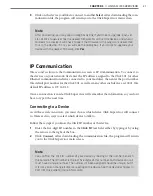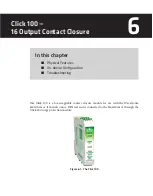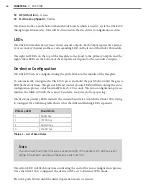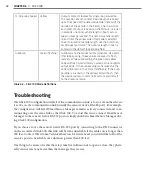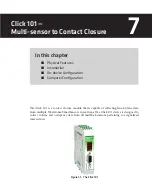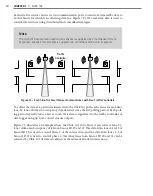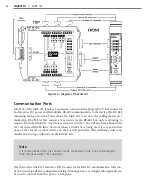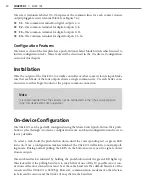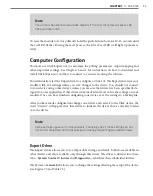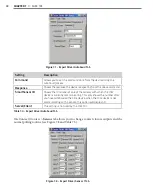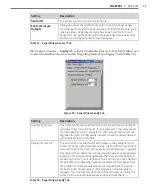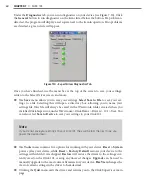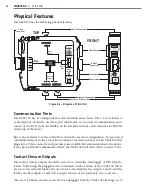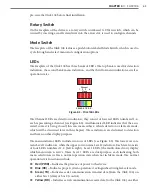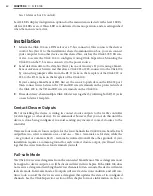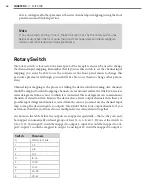
CHAPTER 7
• CLICK 101
51
Sensor ID 21
1
2
3
4
5
Sensor ID 20
Click! 101
Cabinet A
1
2
3
4
5
ф
2
ф
6
Figure 7.3 – The Click 101 Collects from Multiple Sensors
More sensors can be used to control all the phases at each intersection along an arterial or
within a city grid. Each sensor has two different buffers for the lane-by-lane volume and
occupancy data. There will be no loss of data on the sensor as long as each Click 101 com-
municates over a different serial port.
During its normal polling routine, the Click 101 can collect traffic data from up to ten side-
fire units. The normal polling routine will request new lane-by-lane volume and occupancy
data every time it cycles through the list of sensors. If a sensor does not respond after ten
cycles, the Click 101 will suspend data queries to that sensor for one minute. After one min-
ute, the Click 101 will retry data queries twice. If those queries are unsuccessful, the Click
101 will suspend queries for another minute. This feature prevents unresponsive sensors
from unnecessarily slowing down the polling routine.
A Click 101 will not execute its normal polling routine if:
˽
It is being programmed with Click Supervisor or the push-button.
˽
It is being used for RS-232 to RS-485 conversion.
˽
A device connected to the RS-485 bus has sent a passcode message to temporarily
suspend polling.
Lane outputs from any one of the side-fire sensors can be mapped to any of the 16 digital
outputs. Mapping multiple lanes to a single output it also possible.
Physical Features
The Click 101 has 2 communication ports, 16 LEDs, 16 digital outputs and a push-button
(see Figure 7.4).
Summary of Contents for Click 100
Page 1: ...Click 100 400 Series USER GUIDE...
Page 11: ......
Page 17: ......
Page 27: ......
Page 41: ......
Page 43: ......
Page 79: ......
Page 129: ......
Page 145: ......
Page 161: ......
Page 175: ......
Page 183: ......
Page 187: ......
Page 207: ......
Page 219: ......
Page 225: ......
Page 245: ......
Page 259: ......
Page 260: ...www wavetronix com...

